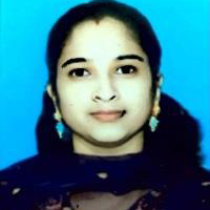International Journal of Wireless and Microwave Technologies (IJWMT)
IJWMT Vol. 15, No. 1, 8 Feb. 2025
Cover page and Table of Contents: PDF (size: 862KB)
Performance Analysis of Optimal and Hybrid Beamforming Techniques and Spectral Efficiency Enhancement for 5G Millimeter-Wave Systems
PDF (862KB), PP.51-65
Views: 0 Downloads: 0
Author(s)
Index Terms
5G Networks, Hybrid Beamforming, Millimeter-Wave Communication, Optimal Weights, Radio Frequency Chains, Spectral Efficiency
Abstract
Millimeter-wave (mm-wave) communication stands as a vital technology for future wireless networks, necessitating efficient beamforming techniques to mitigate significant path loss and harness the extensive mm-wave spectrum. Traditional fully digital beamforming methods are often deemed unfeasible due to the substantial costs and energy requirements, which stem from the need for individual radio frequency (RF) chains for each antenna element particularly in Massive MIMO systems. Hybrid beamforming emerges as a more economical solution, reducing both hardware expenses and energy consumption by utilizing a limited number of RF chains. This paper offers an in-depth evaluation of hybrid beamforming in 5G and beyond mm-wave systems, proposing a new classification framework for various hardware configurations. The research employs a practical approach to compare different strategies, focusing on two main factors: the beam patterns produced with optimal and hybrid weights, and the resulting spectral efficiency, which is a key performance metric. The findings indicate that the beam patterns generated with both optimal and hybrid weights display comparable characteristics, especially for dominant beams. Additionally, the study shows that increasing the number of data streams leads to a significant boost in spectral efficiency, an essential element for enhancing 5G network performance. The systematic comparisons delve into the interactions and trade-offs between these design aspects, highlighting promising candidates for hybrid beamforming in the wireless communication systems of the future.
Cite This Paper
Padmasree Ramineni, Pranaya Pasula, Tejasvey Panchareddy, "Performance Analysis of Optimal and Hybrid Beamforming Techniques and Spectral Efficiency Enhancement for 5G Millimeter-Wave Systems", International Journal of Wireless and Microwave Technologies(IJWMT), Vol.15, No.1, pp. 51-65, 2025. DOI:10.5815/ijwmt.2025.01.04
Reference
[1]M. H. Alsharif and R. Nordin, "Evolution towards fifth generation (5G) wireless networks: Current trends and challenges in the deployment of millimetre wave, massive MIMO, and small cells," Telecommunication Systems, vol. 64, pp. 617-637, 2017.
[2]Q. Xu, C. Jiang, Y. Han, B. Wang, and K. J. R. Liu, "Waveforming: An overview with beamforming," IEEE Communications Surveys & Tutorials, vol. 20, no. 1, pp. 132-149, 2017.
[3]W. Roh et al., "Millimeter-wave beamforming as an enabling technology for 5G cellular communications: Theoretical feasibility and prototype results," IEEE Communications Magazine, vol. 52, pp. 106-113, 2014.
[4]S. Zhang, C. Guo, T. Wang, and W. Zhang, "ON–OFF analog beamforming for massive MIMO," IEEE Transactions on Vehicular Technology, vol. 67, no. 5, pp. 4113-4123, 2018.
[5]S. Ioushua and Y. C. Eldar, "A family of hybrid analog–digital beamforming methods for massive MIMO systems,” IEEE Transactions on Signal Processing, vol. 67, no. 12, pp. 3243-3257, 2019.
[6]A. F. Molisch et al., "Hybrid beamforming for massive MIMO: A survey," IEEE Communications Magazine, vol. 55, no. 9, pp. 134-141, 2017.
[7]I. Ahmed et al., "A survey on hybrid beamforming techniques in 5G: Architecture and system model perspectives," IEEE Communications Surveys & Tutorials, vol. 20, no. 4, pp. 3060-3097, 2018.
[8]S. A. Khwandah, J. P. Cosmas, P. I. Lazaridis, Z. D. Zaharis, and I. P. Chochliouros, "Massive MIMO systems for 5G communications," Wireless Personal Communications, vol. 120, pp. 2101-2115, 2021.
[9]X. Gao, L. Dai, S. Han, C.-L. I, and R. W. Heath, "Energy-efficient hybrid analog and digital precoding for mmWave MIMO systems with large antenna arrays," IEEE Journal on Selected Areas in Communications, vol. 34, pp. 998-1009, 2016.
[10]X. Yu, J. C. Shen, J. Zhang, and K. B. Letaief, "Hybrid precoding design in millimeter wave MIMO systems: An alternating minimization approach," in Proceedings of the IEEE Global Communications Conference (GLOBECOM), San Diego, CA, USA, 2015, pp. 1-6.
[11]F. Khan, Z. Pi, and S. Rajagopal, "Millimeter-wave mobile broadband with large scale spatial processing for 5G mobile communication," in Proceedings of the 50th Annual Allerton Conference on Communication, Control, and Computing, Monticello, IL, USA, 2012, pp. 1517-1523.
[12]Z. Xu, S. Han, Z. Pan, and C.-L. I, "Alternating beamforming methods for hybrid analog and digital MIMO transmission," in Proceedings of the IEEE International Conference on Communications (ICC), London, UK, 2015, pp. 1595-1600.
[13]O. El Ayach, R. W. Heath, S. Rajagopal, and Z. Pi, "Multimode precoding in millimeter wave MIMO transmitters with multiple antenna sub-arrays," in Proceedings of the IEEE Global Communications Conference. (GLOBECOM), Atlanta, GA, USA, 2013, pp. 3476-3480.
[14]E. G. Larsson, O. Edfors, F. Tufvesson, and T. L. Marzetta, "Massive MIMO for next generation wireless systems," IEEE Communications Magazine, vol. 52, no. 2, pp. 186-195, 2014.
[15]D. Borges, P. Montezuma, R. Dinis, and M. Beko, "Massive MIMO techniques for 5G and beyond—opportunities and challenges," Electronics, vol. 10, no. 14, p. 1667, 2021.
[16]T. Kebede et al., "Precoding and beamforming techniques in mmWave-massive MIMO: Performance assessment," IEEE Access, vol. 10, pp. 16365-16387, 2022.
[17]S. Han, C.-L. I, Z. Xu, and C. Rowell, "Large-scale antenna systems with hybrid analog and digital beamforming for millimeter wave 5G," IEEE Communications Magazine, vol. 53, no. 1, pp. 186-194, 2015.
[18]K. Ying, Z. Gao, S. Lyu, Y. Wu, H. Wang, and M.-S. Alouini, "GMD-based hybrid beamforming for large reconfigurable intelligent surface assisted millimeter-wave massive MIMO," IEEE Access, vol. 8, pp. 19530-19539, 2020.
[19]S. Hamid et al., "Hybrid beamforming in massive MIMO for next-generation communication technology," Sensors, vol. 23, no. 16, p. 7294, 2023.
[20]M. A. Albreem, M. Juntti, and S. Shahabuddin, "Massive MIMO detection techniques: A survey," IEEE Communications Surveys & Tutorials, vol. 21, pp. 3109-3132, 2021.


